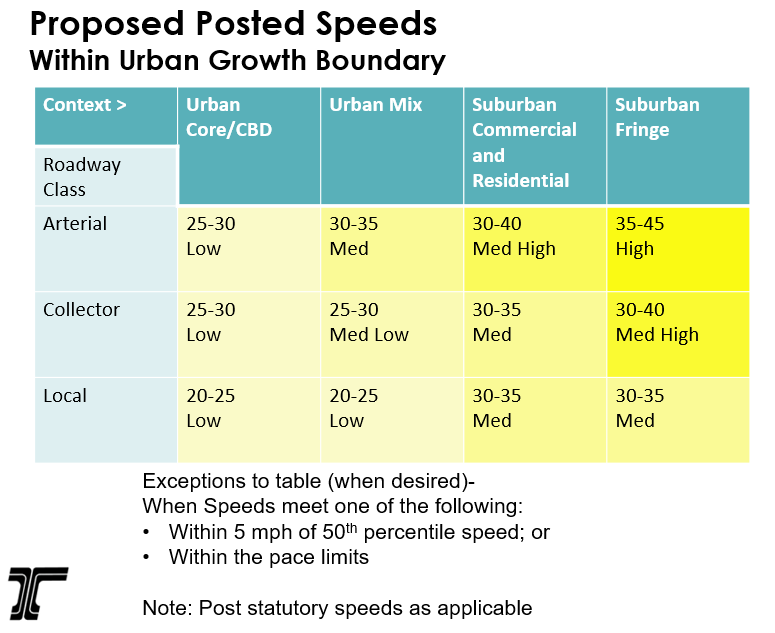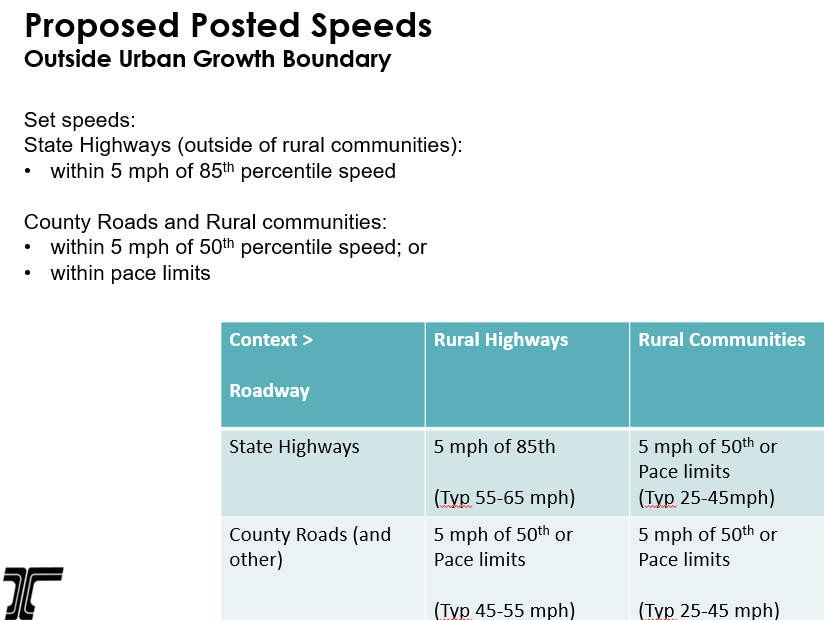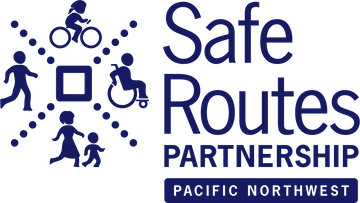In 2017, the city of Portland received local speed setting authority from the Oregon Legislature to reduce residential speeds from 25 to 20 mph. A rigorous “20 is Plenty” campaign and 2,100 new speed signs later, Portland has made significant strides towards slowing down cars. Meanwhile, other Oregon communities are interested in getting their own speed setting authority, including Eugene which recently adopted a 5-year Vision Zero Action Plan. Currently, cities other than Portland must make a formal request to ODOT to change local speeds. At the Safe Routes Partnership, we believe delegating local speed setting authority to local communities will allow for speeds to be set more quickly, efficiently and consistently across street types. That’s why we’ve been tracking speed discussions by the cities, legislature and ODOT, and we’re hopeful for some substantial changes soon.
The Safe Routes Partnership strongly supports local speed setting authority and submitted testimony earlier this session in favor of legislation that would allow local jurisdictions to establish speeds lower than the statutory limit. One of those bills is SB 558, which would specifically allow cities to speed setting authority of five miles per hour lower than statutory speed for non-arterial highways under the city’s jurisdiction. SB 558 is just one of many speed-related bills, but appears to be the only measure with any hope of moving this session. We may expect legislative action yet, but we are also following discussions already picking up at ODOT.
The Oregon Speed Zone Review Panel is an advisory body to ODOT and is comprised of representatives from the Transportation Safety Committee, the Oregon State Police, the Association of Oregon Counties, the League of Oregon Cities and ODOT. The Speed Zone Review Panel met last week to establish its oversight role in the updating of Oregon Administrative Rules (OARs) for setting designated speed limits. ODOT staff reviewed Oregon’s current speed setting methodology, which relies heavily on the 85th percentile, and discussed national trends, including the advocacy to remove the 85th percentile. While national recommendations are expected this summer, ODOT has drafted concepts for proposed speed zoning methodology. Here are those concepts which outline proposed speeds within and outside of the Urban Growth Boundary (UGB):


Generally, shifting away from the 85th percentile is encouraging, but we’ll be interested to hear in future ODOT meetings how and when local communities will be able to reduce speeds on local roads. We’re committed to supporting local jurisdictions around the state in reaching their goals to eliminate traffic deaths and serious injuries, and we’ll continue to follow this discussion and post opportunities for public comment

